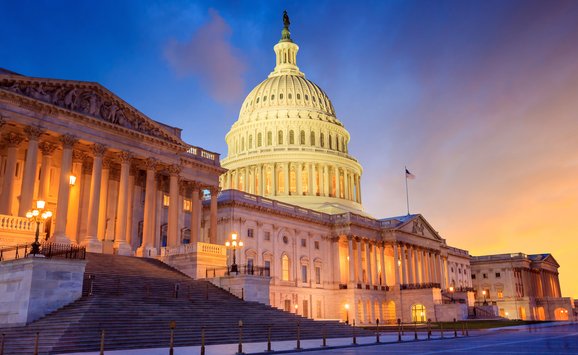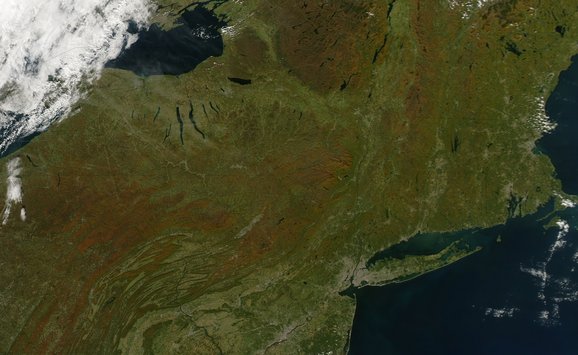The Florida controversy illustrates in extreme form the complexities of the natural, institutional, and political situations that bear on location decisions for major facilities. It also shows that the jetport is only one element among those which have come to affect the ecological and environmental situation in South Florida as an accompaniment of sustained economic growth.
The Everglades are popularly regarded as a swamp. Actually they are a very shallow river, 30 miles wide and 100 miles long, with a slope to the south and southwest of about one foot in 10 miles. During the wet season there is a gradual flow in this direction. During the dry season water tends to accumulate in low places, especially in alligator holes, and these accumulations teem with aquatic life which feeds an outstanding feature of the Everglades: the bird population that includes a number of rare and endangered species—among them the roseate spoonbill and the wood ibis.
Most of the water for the Everglades National Park comes from rainfall, but probably about one quarter flows in from outside the park area. The ecosystem of the park is dependent not only on the amount of water flowing through the area but on the timing of water flows and the quality of water. The park, which constitutes only a portion of the entire Everglades area and an even smaller portion of the watershed for the Everglades, can be profoundly affected by what occurs outside its boundaries.
Conditions in the park area are affected by water management and drainage programs designed to meet the needs of agriculture and of towns and cities along Florida's east coast. Dikes built by the Corps of Engineers after the damaging hurricanes of 1926 and 1928 substantially influenced the hydrology of the area as well as the timing and quantity of water flowing through the Everglades.
The Corps' efforts culminated in "the establishment of a Flood Control District that contained three water conservation areas. These served as impounding reservoirs to aid in lowering the level of the lake during the hurricane season and in recharging groundwater aquifers for the east coast area, but they soon became a valuable recreation resource in themselves. As part of the project the Corps built four sets of gates to control water flow into the park. When drought struck in 1961 and continued through 1965, the gates were closed, cutting off the natural flow of water from the north.
The impact on the park ecology was considerable. The organic soils burned, and the wood ibis population was reduced to 3,000 nesting pairs. The situation was aggravated by the decline in the alligator population, which, as a result of years of poaching and destruction of habitat, had dwindled to an estimated 20,000. The alligator is important to the ecology of the Everglades chiefly because of the water-filled "gator holes" in which he lives. Abundant life collects in these holes in the flat landscape and provides food for the bird population. But with fewer alligators many of the gator holes are disappearing.
Abundant rains after 1965 and agreement among the agencies involved for annual release of 315,000 acre-feet of water to the park temporarily halted the threat to the area. However, the agreement says nothing about the water's quality, and it is not clear that the release schedule will comport well with the pattern of natural inflows. Also, there is doubt whether the water would be released during drought periods if irrigation or municipal purposes compete for its use.

At this point a new threat arose in the form of a proposed major jet airport. What happened shows both the complexity of such issues and the power of public opinion.
Demand for commercial aviation to serve South Florida began to rise spectacularly in the early part of the decade. Miami International Airport is heavily used for training, and one way to help relieve rising congestion is to remove the training operations. Since airlines prefer to conduct their training near regular flight operations in order to use commercial aircraft during layover periods, a nearby site was favored for a training facility.
An area astride the Dade-Collier County line was selected. This site, almost midway between the two coasts and about 50 miles from Miami via Tamiami Trail, covers 38,000 square miles and is only 6 miles north of the Everglades Park at its closest point. At first it appears that the Tamiami Trail Highway, whose enlargement to four lanes had already been planned, would give sufficient access to the new field. Subsequently, an extension of Interstate 75 was planned which would cut across the state north of the Tamiami Trail to service the airport area and divide one of the water conservation areas. The highway would also cut across the Big Cypress Swamp which is the main outside source of water for the park besides the drainage from Lake Okeechobee. The proper placement of culverts would probably not affect the total amount of water flow to the park but could alter the time pattern.
It soon became clear that the training airport could also grow into one of the world's major commercial airports, serving a substantial part of the Southeast. The Department of Transportation responded with a study of rapid transit possibilities to service the coast and airports. A tracked, air-cushion vehicle which could service a number of cities along the Florida coast was one of the possibilities.
This complex of airport, highways, and rapid transit was a transportation planner's dream. However, spurred by conservationists in South Florida and by the national press, widespread anxiety arose over the possible impact of airport and transportation facilities on the park. Accusations included absence of public hearings and lack of adequate coordination among the agencies involved, especially lack of consultation with the park and conservation interests.
Where do matters stand at the end of 1969? There is a new training airport on which one runway has been completed. Possibly the airport could remain as a training facility, although that is almost certainly not what the Dade County Port Authority or the developmental interests of Dade and Collier counties had in mind. But even if the facility were limited to training (which would mean that few, if any, people would live at the site), some environmental problems would occur. The 250,000 operations projected for 1970 would presumably cause some degree of air pollution plus a large amount of noise.
The second possibility, apparently now averted, is full development of the airport as a commercial facility. Some have projected that if this were to occur the population of the area might grow to be 1.5 million. Because the area is bordered by the Water Conservation Areas and the Everglades National Park, the urban and industrial development would tend to locate in the Big Cypress Swamp region which is the source of 30% to 40% of the surface water flowing into the park from the outside. Increased evaporation and the additional drainage needed would reduce the park's water supply. Also, pollution of the water would be difficult if not impossible to avoid.
Development interests have argued that growth of the area could be planned and managed so as to avoid damage to the park. They point to the new Tri-County Planning Commission for Dade, Collier, and Monroe counties. However, the authority of this commission does not extend beyond advisory powers. A 1969 report of a special Interior Department task force, headed by the noted conservationist Luna Leopold, concluded: "Regardless of efforts for land use regulation, the result of proceeding with development of the airport will be destruction of the South Florida ecosystem. Estimates of lesser damage are not believed to be realistic."
On the strength of this report and other pressures, Secretary of the Interior Hickel, Secretary of Transportation Volpe, and Governor Kirk have declared that the airport should not be developed beyond training functions and that an alternative site for the commercial airport should be found. At the close of 1969 rules were being developed by the departments of Transportation and Interior to help protect the park against water, air, and noise pollution threats from training operations. But contrary to the judgment of airport opponents, who felt that training operations should not be permitted until the Big Cypress is protected against development, the Secretaries of Interior and Transportation in late November gave the go-ahead for a year's training operations.
In all this controversy location of a suitable alternative site has received scant attention. Assuming that a large commercial airport is needed in South Florida, it is hard to imagine any site that would be free of large-scale external effects. Most of the possibilities would cause a greater amount of noise over developed areas, provide less good access to the west coast, and have at least as bad or worse effects on the recreational value of the Conservation Areas as the site north of the Everglades. How such factors should be weighed off against threats to the park is a question still to be resolved.





